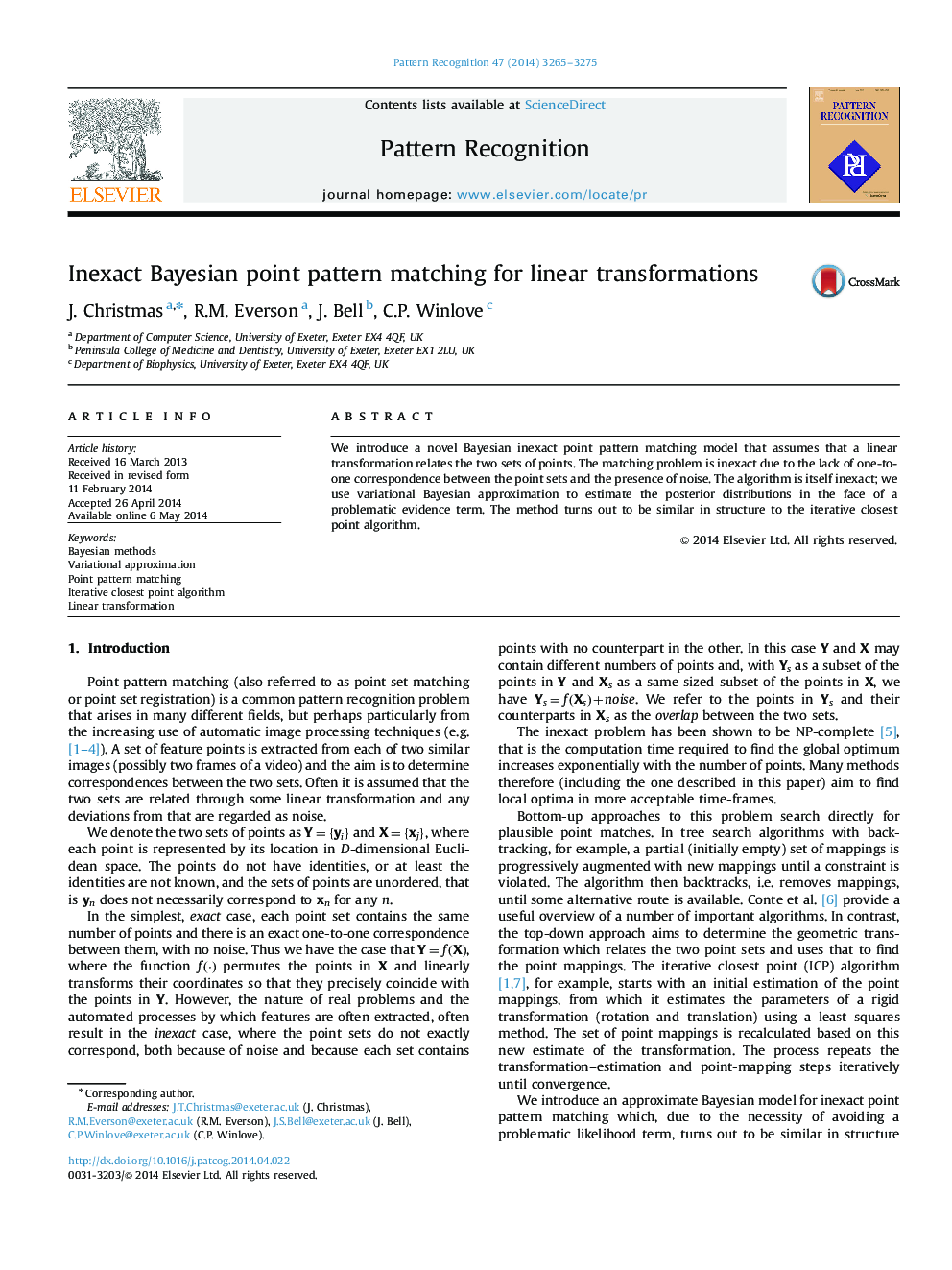| Article ID | Journal | Published Year | Pages | File Type |
|---|---|---|---|---|
| 530672 | Pattern Recognition | 2014 | 11 Pages |
•We model matching sets of points related by linear transformations.•We model inexact matching (not a complete 1-1 correspondence) of noisy points.•Variational Bayesian methods give computationally efficient posteriors for variables.•Posterior matching probabilities indicate matched and unmatched points between sets.•Technique is demonstrated on 3D synthetic data and optical microscopy image stacks.
We introduce a novel Bayesian inexact point pattern matching model that assumes that a linear transformation relates the two sets of points. The matching problem is inexact due to the lack of one-to-one correspondence between the point sets and the presence of noise. The algorithm is itself inexact; we use variational Bayesian approximation to estimate the posterior distributions in the face of a problematic evidence term. The method turns out to be similar in structure to the iterative closest point algorithm.
